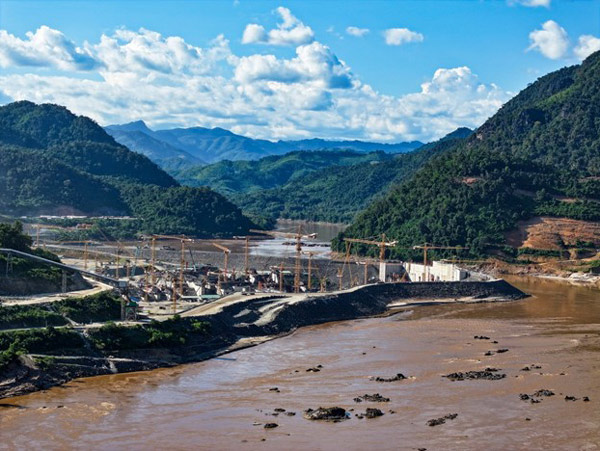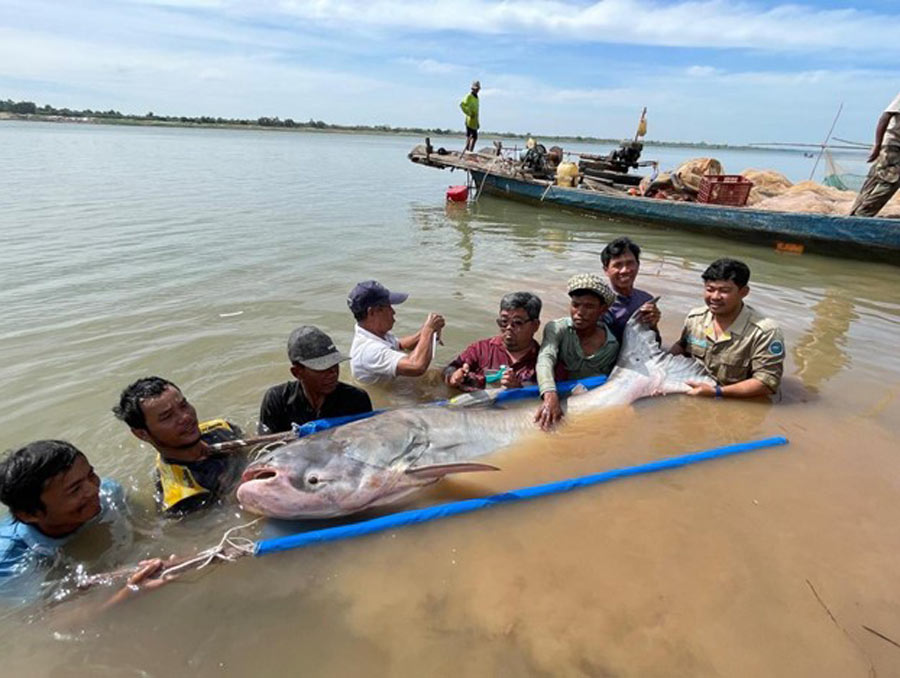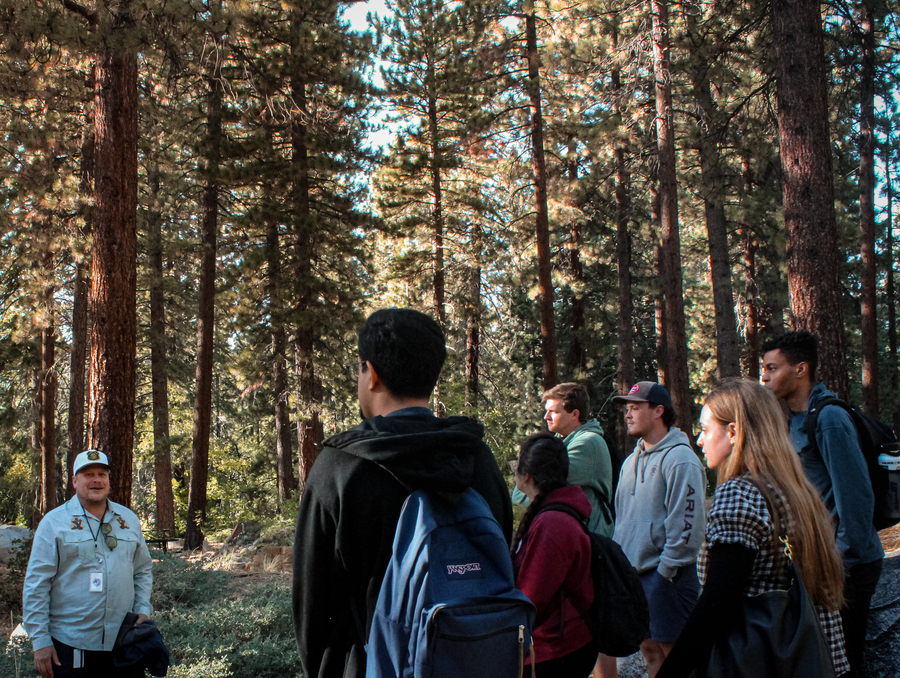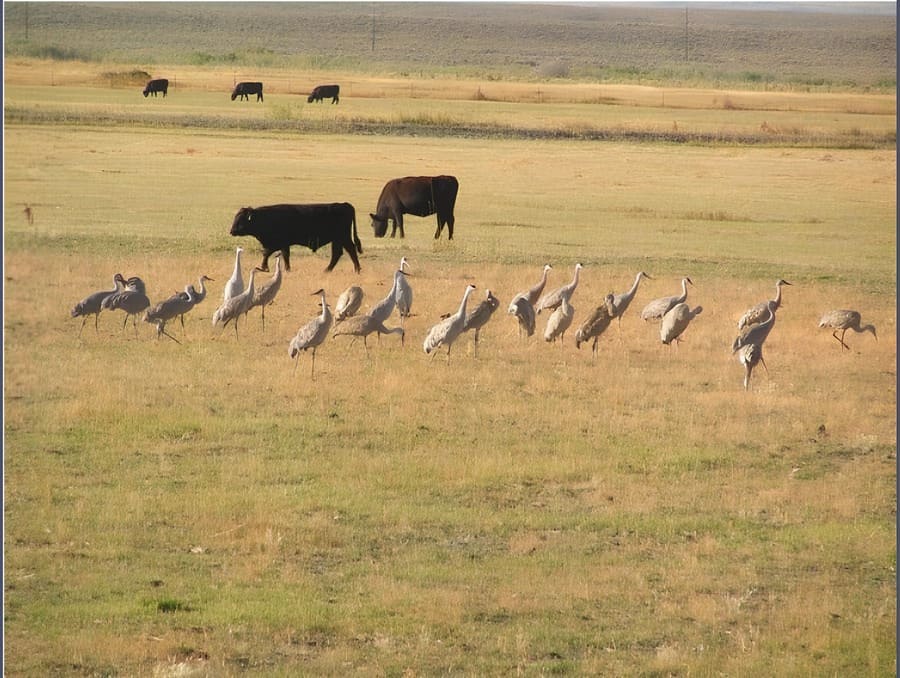In this first-person narrative, Stefan Lovgren reports on the many ways the Mekong River is being impacted and the uncertainty of its future. This article was first published on Circle of Blue. Lovgren works with the University of Nevada, Reno’s Tahoe Institute for Global Sustainability.
I first began covering the Mekong River in Southeast Asia almost two decades ago, encountering fish so immense they seemed almost mythical: giant freshwater stingrays weighing as much as a grand piano, and grizzly bear-size Mekong giant catfish.
No other river on Earth harbors so many colossal fish. Their fates reveal something essential about the river itself. Once abundant, the Mekong giant catfish now teeters on the brink of extinction, its numbers decimated by overfishing and its long migrations severed by dams. In Thailand, it has virtually disappeared in the wild. The species’ decline mirrors the river’s own unraveling.
History is a reminder: people along this river do not easily give up.
Still, one of the remarkable qualities of rivers is their ability to rebound when given the chance. In the United States, salmon recently returned to the Klamath River within days of a dam being removed. Around the world, restoring migration corridors and floodplains causes life to rush back.
Southeast Asia’s Mekong River is often described as the most productive river in the world. It sustains the planet’s largest inland fishery, feeding millions and driving one of the most remarkable food systems on Earth. More than 1,000 fish species inhabit the river system, making it one of the most biodiverse freshwater ecosystems anywhere.

For more than 60 million people who live along its banks, the Mekong provides food, livelihoods, transport, energy, and cultural identity. Few rivers on Earth offer such a clear illustration of natural wealth. I’ve spent several years working alongside Cambodian scientists and local communities to document the river’s decline and its resilience. Fishermen, for instance, captured and released a record-breaking 661 -pound freshwater stingray, proof that the Mekong still holds mysteries.
Cambodia canceled two large dams in the northern part of the country, preserving one of the planet’s most biodiverse stretches of river. Juvenile Mekong giant catfish are caught in the wild, evidence that this critically endangered species still spawns here. These moments complicate the narrative of collapse. They show a river battered, but also enduring.
There is other systemic evidence of the Mekong’s fragility and resilience On Tonle Sap Lake, in Cambodia, shrinking flood pulses, dwindling breeding habitat, and collapsing fish stocks point to systemic failure. Yet stronger enforcement and the creation of conservation zones have, in some areas, led to recovering fish populations.
In the Mekong Delta, at the river’s mouth, projections show that by mid-century salinity intrusion could render vast areas of farmland unusable. But here, too, nature-based solutions—restoring wetlands, reconnecting floodplains, rethinking rice farming—offer ways forward.
Along the mainstem, the story is less a single cliff edge than a cascade of thresholds already crossed: sediment loss, altered flows, broken connectivity. Each compounds the other, pushing the system toward the brink without necessarily toppling it all at once.
Great river at pivot point
Yet the Mekong is among the most threatened great rivers. Since the 1990s hundreds of dams have been constructed in China, Laos, and other Mekong countries, fragmenting the river and its tributaries. Overfishing, rampant sand mining, and plastic pollution have intensified the strain. Climate change has brought longer, harsher droughts and unpredictable floods.

Once-reliable fishing systems, like the Cambodian dai nets—stationary bag nets—now fail in certain years. In the Tonle Sap Lake, often called the beating heart of the river system, fish catches have fallen by as much as 90 percent for some species.
These mounting pressures raise an urgent question: can the Mekong withstand such relentless strain, or is it nearing an ecological tipping point?
I have been working with colleagues such as Rafael Schmitt of the University of California, Santa Barbara, to explore ways to assign dollar values to the Mekong’s services—its fisheries, sediment flows, flood protection, biodiversity, and cultural traditions. The goal is to help policymakers grasp what is at stake in financial terms.
At a recent workshop at the University of Nevada, Reno’s Tahoe Institute for Global Sustainability, researchers, Indigenous leaders, and conservation practitioners came together to test this approach. Drawing on examples from Nevada’s Truckee and Walker Rivers alongside the Mekong, participants mapped how rivers operate as economic engines hidden in plain sight. Freshwater services—feeding families, buffering floods, nurturing biodiversity, sustaining cultural identity—do not always appear in traditional accounting. But once translated into dollar terms, their loss becomes unmistakable: not only an ecological disaster, but a profound economic one.
Value in economic assessment
One lesson is becoming clear. The services rivers like the Mekong provide are both more plentiful and more valuable than fragmented studies have suggested, and they are difficult to capture in purely numerical terms. On Tonle Sap Lake, for instance, a 90 percent crash in fish catches is not just an abstract figure but the disappearance of a primary protein source for millions. In the Delta, projections of saltwater intrusion translate into rice paddies turning barren, with livelihoods and food security collapsing in step. Numbers give scale, but stories give meaning.
For many human communities, the tipping point may already have arrived. In Cambodia, fishers who can no longer sustain themselves from dwindling catches, or farmers in the Delta watching their fields turn salty, live in a present that feels like collapse. For them, mounting pressures raise an urgent question: can the Mekong withstand relentless strain?

I was reminded of this recently when speaking with Niwat Roykaew, the longtime Thai activist and Goldman Environmental Prize winner. He described the dire pollution now flowing from gold and rare earth mining across the border in Myanmar, poisoning the Kok River, a tributary of the Mekong. The scale of destruction can feel insurmountable.
And yet, Niwat is the same man who, together with local communities and groups like International Rivers, spent two decades fighting China’s plan to blast rapids on the Mekong—and won.
That history is a reminder: people along this river do not easily give up. They fight because the river is inseparable from their lives. And that fight matters. The Mekong will endure. It may not be the river it once was—species may vanish, services could be diminished—but it will continue to flow, to adapt, to sustain life in new forms. The real question is not whether it survives, but what kind of river it will become, and for whom.
















